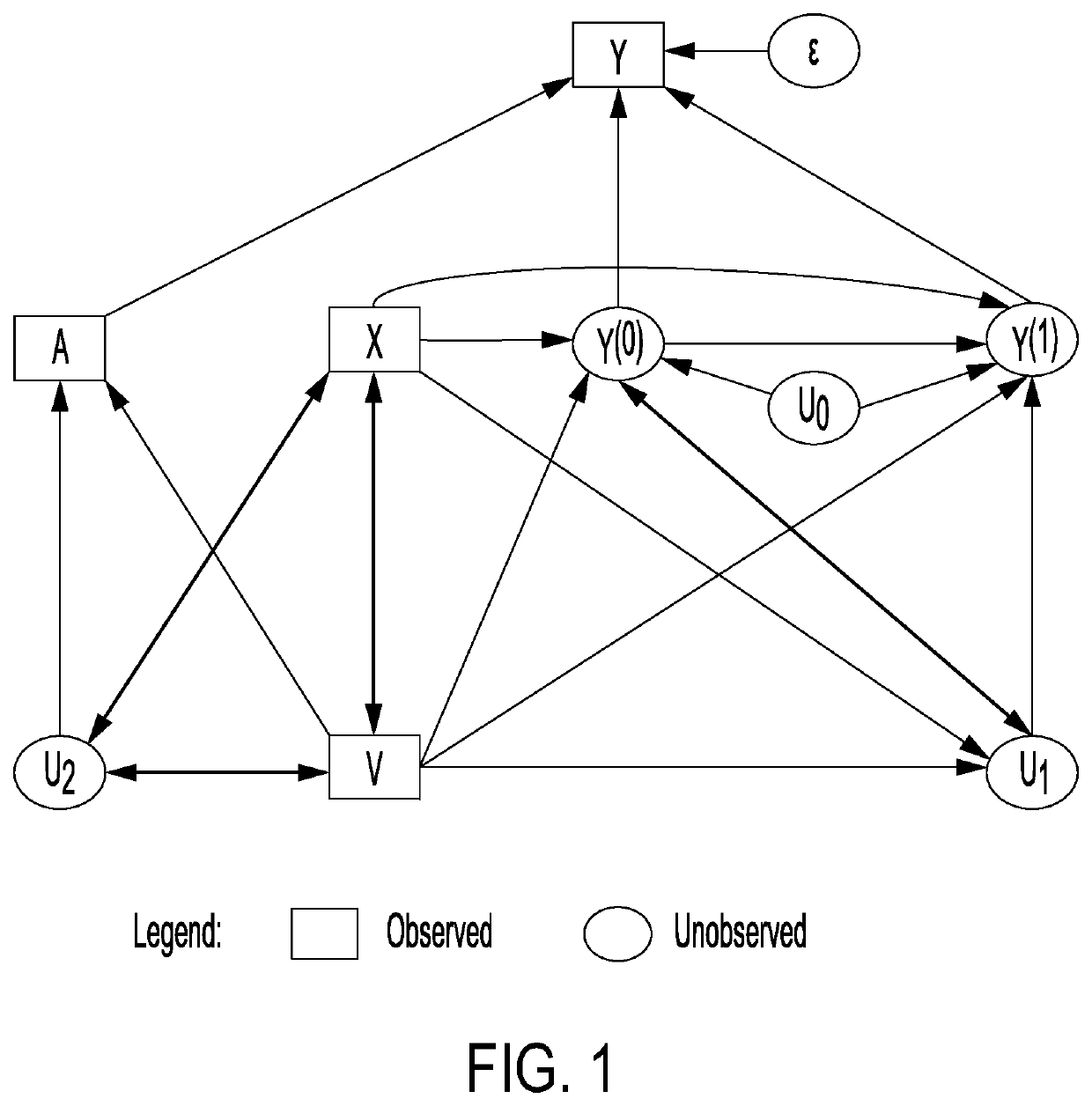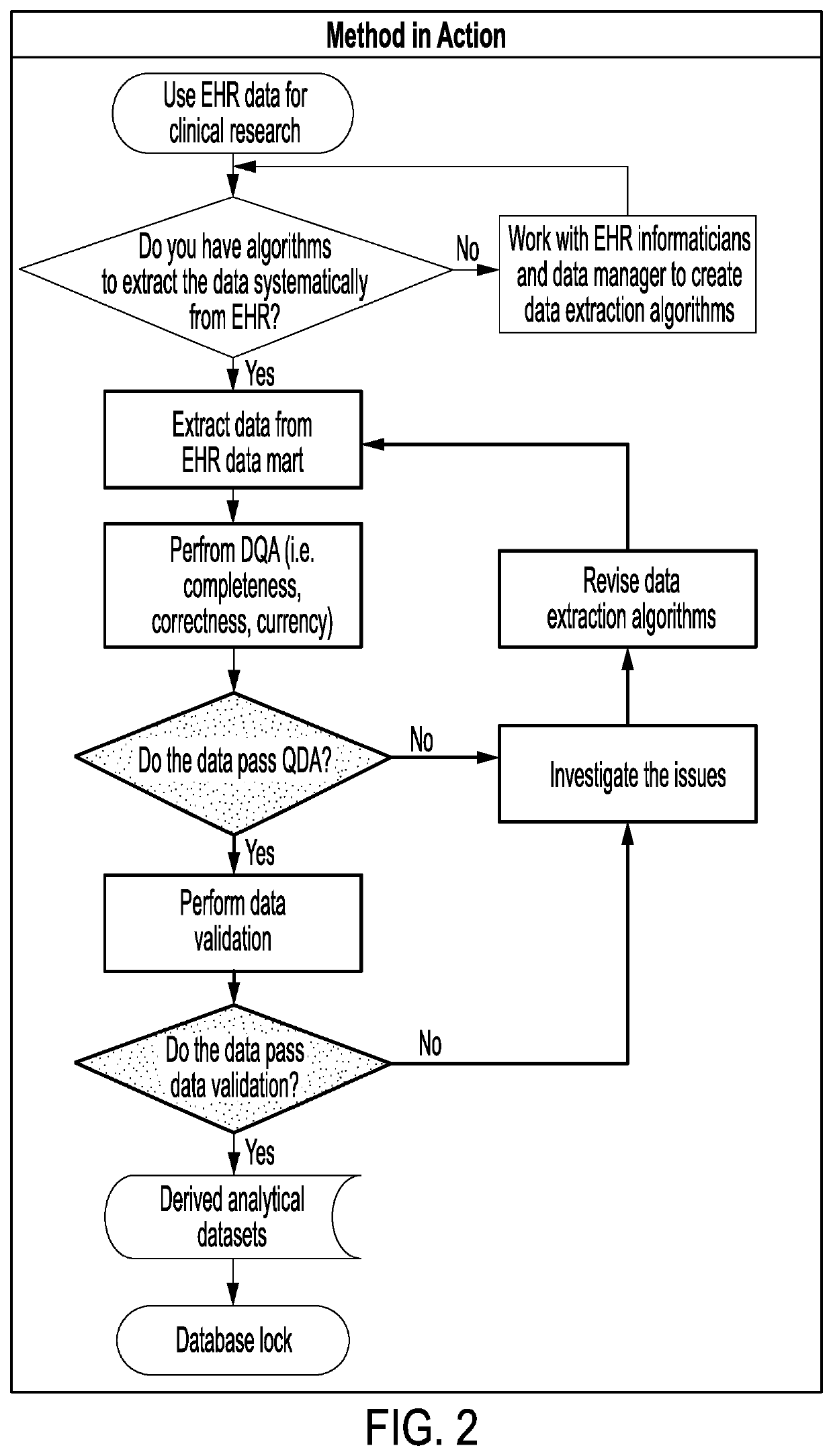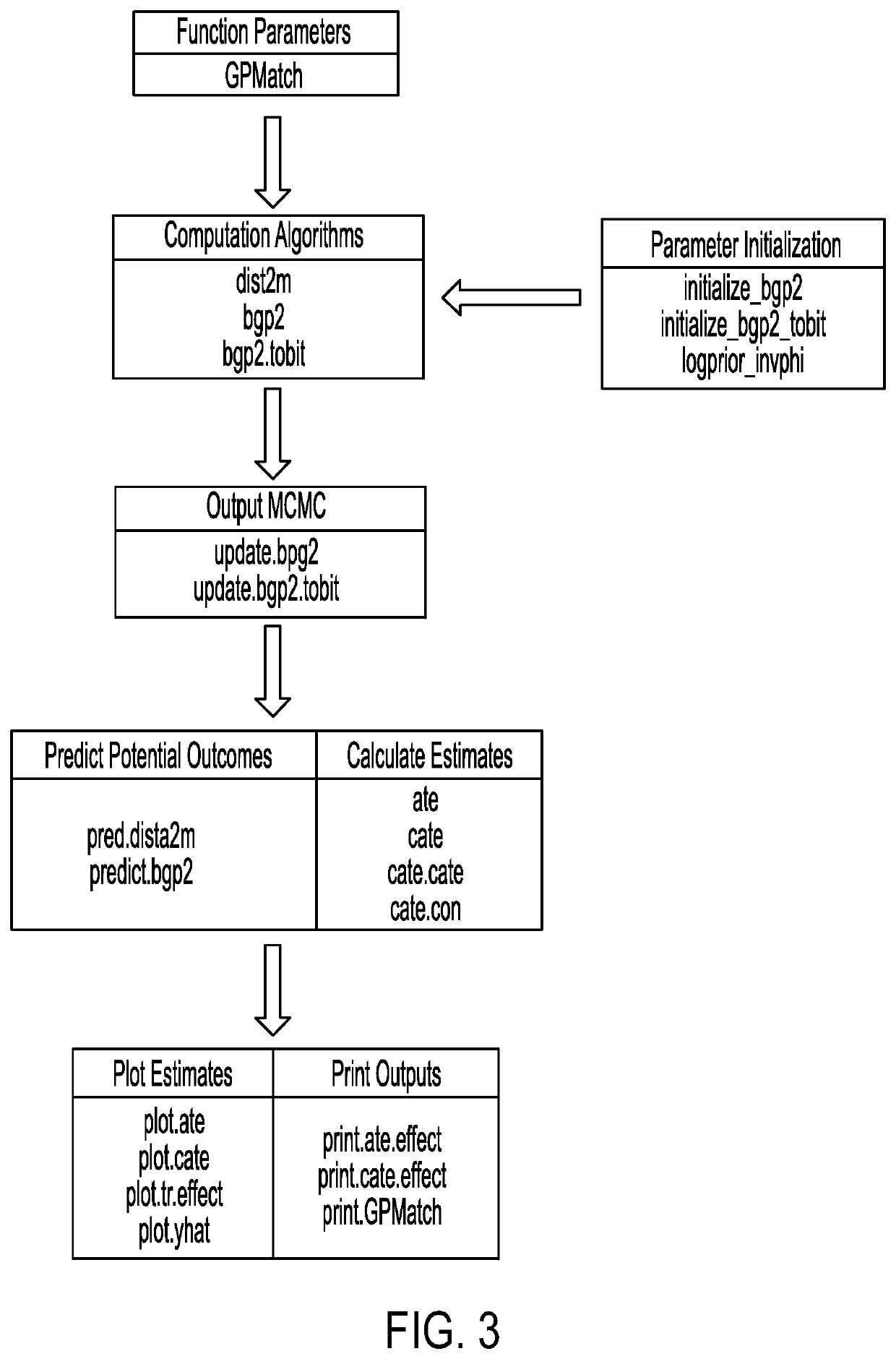Bayesian causal inference models for healthcare treatment using real world patient data
- Summary
- Abstract
- Description
- Claims
- Application Information
AI Technical Summary
Benefits of technology
Problems solved by technology
Method used
Image
Examples
examples
Simulation Studies
[0293]To empirically evaluate the performance of GPMatch in a real world setting where neither matching structure nor functional form of the outcome model are known, we conducted three sets of simulation studies. The first set evaluated frequentist performance of GPMatch. The second set compared the performance of GPMatch against MDmatch, and the last set utilized the widely used Kang and Schafer design, comparing the performance of GPMatch against some commonly used methods.
[0294]In all simulation studies, the GPMatch approach used a squared exponential covariate function, including only treatment indicator in the mean and all observed covariates into the covariance function, unless otherwise noted.
[0295]The performance of GPMatch was compared with the following widely used causal inference methods: sub-classification by propensity score quantile (QNT-PS); augmented inverse treatment probability weighting (AIPTW); regression adjustment—namely linear model with PS ...
case study 1
1. JIA Binary Treatment and Continuous Outcome Setting with JADAS as Primary Outcome
[0340]Some studies have suggested that early initiation of biologic DMARDs may provide a window of opportunity in preventing joint damage and disability, or in achieving clinical remission off medication. However, real-world evidence demonstrating efficacy of is lacking.
[0341]This initial example describes the use of GPMatch to evaluate whether therapy using early aggressive combination of non-biologic and biologic DMARDs (“early combination therapy”) is more effective than the more commonly adopted non-biologic DMARDs monotherapy (“monotherapy”) in treating children with recently (<6 months) diagnosed polyarticular course of JIA. Due to the 6 month end point, this study did not compare the “step up” therapy with “early combination” therapy. Those alternatives are addressed in the example below.
[0342]The source data was collected from a completed prospectively followed up inception cohort research s...
case study 2
2. JIA Binary Treatment and Continuous Outcome Setting with c-JADAS as Primary Outcome
[0348]This example evaluated the effectiveness of the early combination therapy with the more conservative strategy of treating with bDMARDs only later, following an initial treatment with montherapy (“step up therapy”), for children with newly diagnosed polyarticular course JIA (pcJIA). The primary outcome was reduction in disease activity and improved quality of life as measured by the Juvenile Arthritis Disease Activity Score (cJADAS) at 6 and 12 months. Higher cJADAS indicates higher disease activity. The cJADAS was calculated for all 0, 6, and 12 months visits using observations from clinical encounters fall within the 1-month time window. If more than one clinical encounter occurred within the window, then an averaged value of the specific core measures was used. The secondary outcome was health-related quality of life assessed by the Pediatric Quality of Life Inventory (PedsQL) generic modu...
PUM
 Login to View More
Login to View More Abstract
Description
Claims
Application Information
 Login to View More
Login to View More - R&D
- Intellectual Property
- Life Sciences
- Materials
- Tech Scout
- Unparalleled Data Quality
- Higher Quality Content
- 60% Fewer Hallucinations
Browse by: Latest US Patents, China's latest patents, Technical Efficacy Thesaurus, Application Domain, Technology Topic, Popular Technical Reports.
© 2025 PatSnap. All rights reserved.Legal|Privacy policy|Modern Slavery Act Transparency Statement|Sitemap|About US| Contact US: help@patsnap.com



